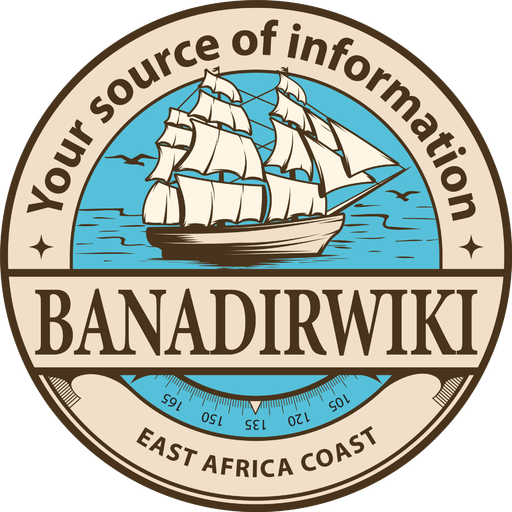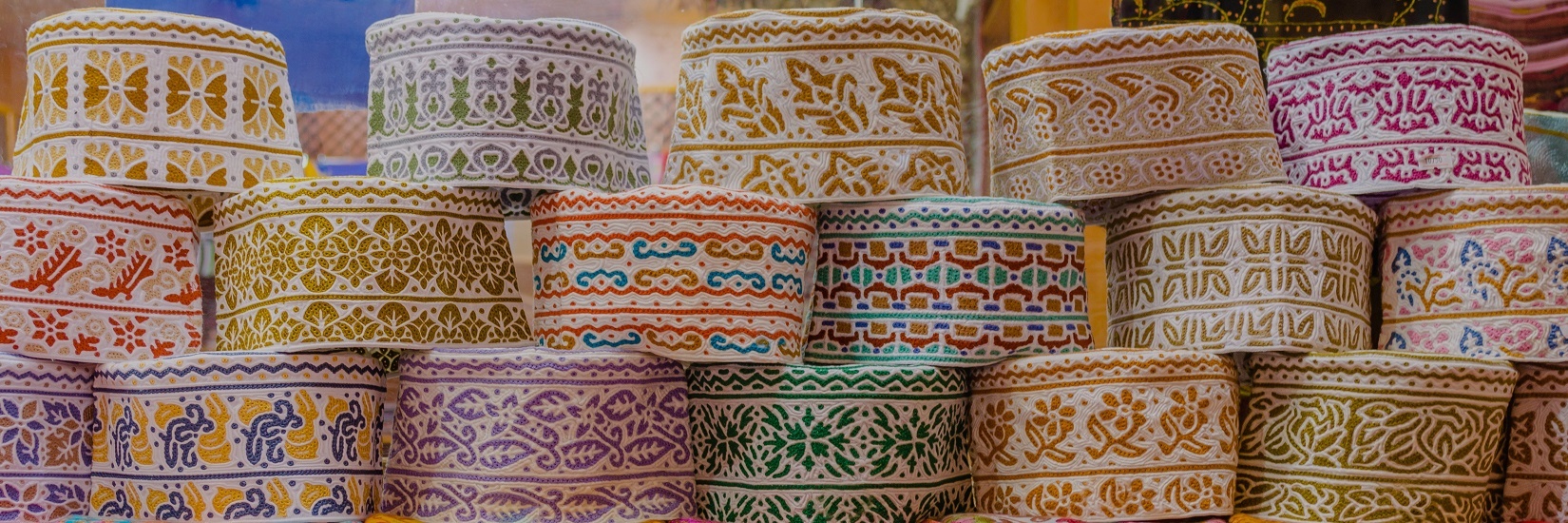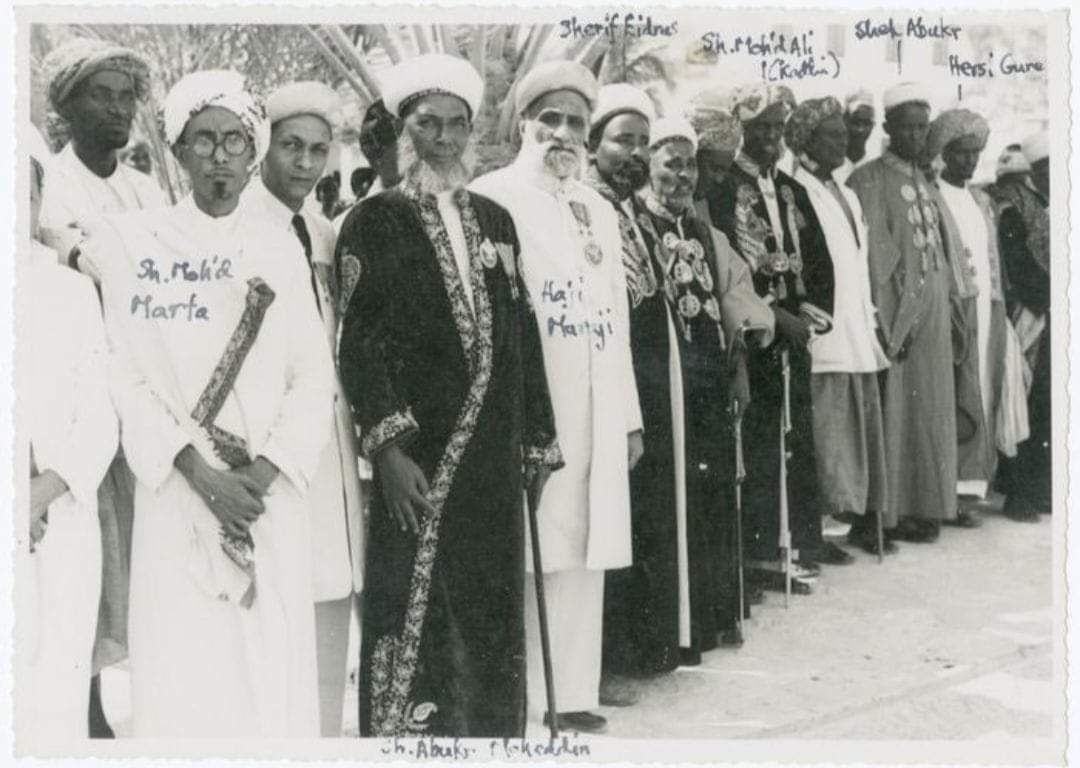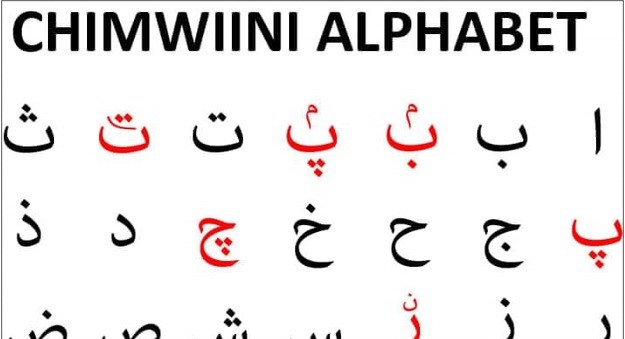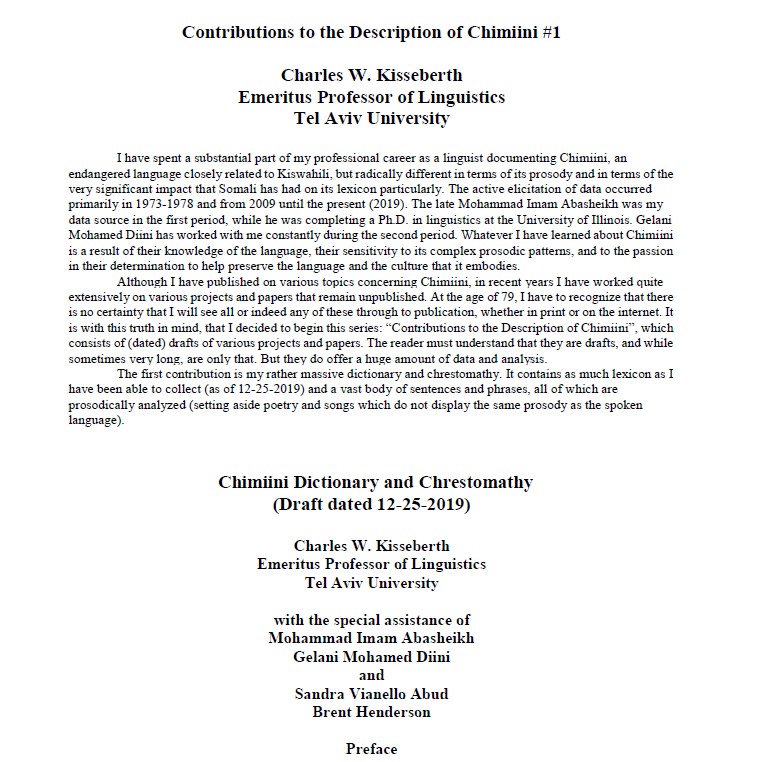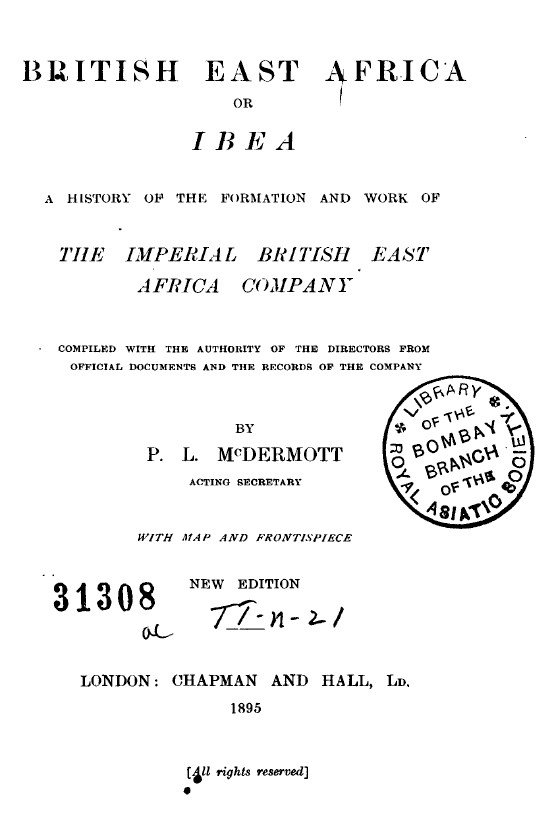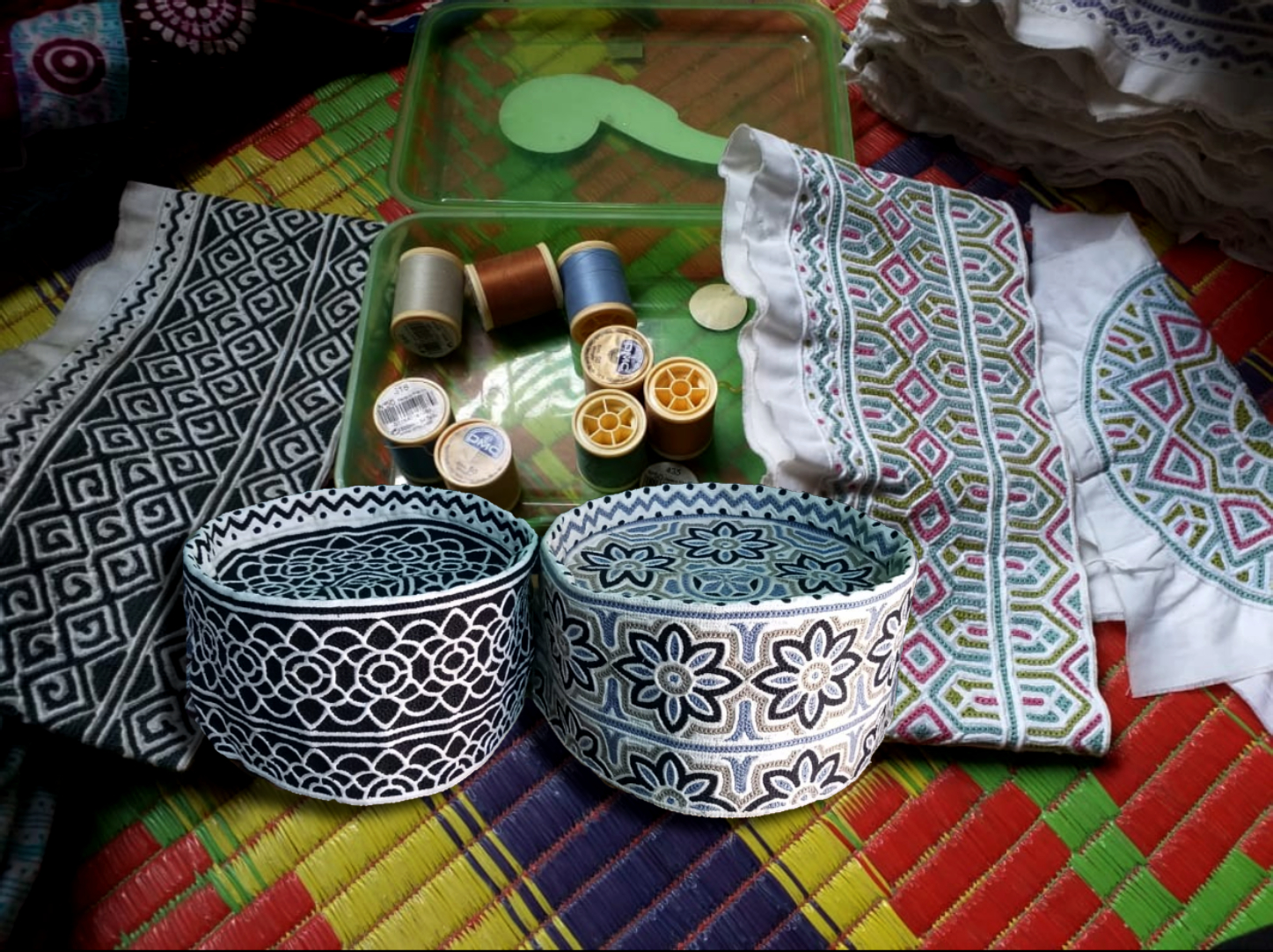
In the 1950s and early ‘60s, when coastal trade was still carried out mainly by dhows, the people of Barawa were amazed (and vastly amused) at the sight of some sailors coming from the southern Swahili coast, busily engaged in embroidering skullcaps during their free time on shore. Actually, these skullcaps were not a novelty: it was a kind of headgear exceedingly common along the whole East African coast. It could be found from the Comoro Island to Somalia and, after independence, these embroidered skullcaps became a kind of badge of office for all senior Somali politicians. In Barawa itself, almost the whole male population of the town wore the “Makofya” and the older men, who routinely shaved their heads, used to wear them both out of doors and at home, taking them off only when sleeping.
The surprise was caused by the fact that this job was carried out by men, because in Barawa the sewing of skullcaps was typically a woman’s job and arguably the most widespread of all economic activities carried out by females. Barawa’s women had always traditionally strived to supplement their income by carrying out some domestic activity that could be financially rewarding. According to their level of instruction and manual abilities they were usefully employed in teaching the Qur’an to young children, plaiting straw to make mats and baskets, modelling and firing pots, or preparing sweetmeats, biscuits and cooked food to be sold in the market and in the small coffee-shops of the town. Sewing machines were a regular feature in most houses and many women made their own as well as friends’ and neighbours’ dresses.

Interestingly, the sewing, designing of patterns, embroidering, and finishing of skullcaps were not carried out by a single woman or even by different women of the same family, but were considered specialized jobs that involved women belonging to different households, thus spreading the economic benefits of this activity among several individuals. The women who prepared the skullcaps prior to their embroidery had to buy a length of white cotton cloth (bafta nelpe). They would double the cloth and then cut two different pieces: a square one which would eventually become the crown of the skullcap (kahfi) and a long piece, approximately 11 cm. high, which would later be sewn diagonally into a cylinder and provide the lower part of the ikofya (msharadha).
They then proceeded to draw the patterns, which usually had traditional names, such like “the mosque”, “the lorry”, the “Bayt al-Ajaib” (the ceremonial palace of the Zanzibar sultans), the “kawlabu” (hook), etc. The most skilled carried out this job using only a pencil and a ruler, and it it amazing to see the perfection of the finished pattern if one thinks that these women had never had any formal instruction in geometry or drawing. However, pattern books were also available.

The crown of the skullcap (the square piece) was inscribed with several concentrical circles, using the base of bowls and glasses. A single, floreal motif would fill the smaller circle, called chidira, while a second circle, very slightly larger than the first, would leave the space for a single line of eyelets between the two. A much larger circle would mark the edge of the round crown, while the intervening space (4 to 5 cm. high) was divided into six parts, called zijumba, in each of which they would draw the main pattern, which would be thus repeated six times. The second piece of cloth (the msharadha) was similarly divided into different sectors.
The upper part (the one nearer to the crown) usually bore a simple geometric pattern, followed by a line of eyelets, while the main part would have the same pattern as the crown, which was here repeated eight times. The regularity of the spaces would be ensured by folding the cloth, without measuring it in inches or centimetres. Another line of eyelets would follow and, in the lower part (approx. 3 cm. high), two different designs would alternate four times to make up for another eight.
After completing the drawing, the double cloth would be sewn by machine along all the lines of the pattern. A twin, parallel line of sewing would provide the space along which a strong thread (called matanvula) would be later inserted in order to give a certain rigidity to the cap, especially along the edge. The final operation consisted in sewing diagonally this second piece of the cap in order to obtain a cylinder.

The caps thus prepared were called “raw” (makofya mawiti) and were ready for sale to other women, who would assess at a glance how much embroidery work each pattern required and would make their selection accordingly. The size of the caps, that is half of the actual circumference of the hat, was measured in “taka” and “manda”, a taka consisting in the distance between the tip of the thumb and that of the small finger when the hand is open, and the manda being the breadth of a finger. The size of a cap could be for example “taka na manda manne”, that is one taka and four fingerbreadth.
The embroidery consisted in making small round eyelets, which were then pierced with a porcupine quill. Different kinds of thread could be used for the embroidery, from normal cotton thread, usually in various shades of brown, to the very fine threads obtained from a piece of raw silk (luzi la lasi). The value of the cap on the market would depend on the number, evenness, and smallness of the eyelets. The embroidery, which required patience and very good eyesight, was mainly entrusted to young girls, who usually worked at it from mid-morning to noon, when the natural light was best.
They would sit on a low stool (gambar), spread a clean white cloth on their knee, lay the cap on it and work at the embroidery while chatting or reciting the religious poems for which Barawa was famous. Those girls who were employed as teachers in the Coranic schools could also embroider while listening to their pupils reciting the Qur’an by rote.
The most complex patterns would be embroidered with as many as 5,000 eyelets that would take approximately twenty days to one month to complete, while the simpler ones would require only some hundreds eyelets. After completing the day’s work, the unfinished cap, the thread and the porcupine quill would be all folded into the clean cloth and put away.
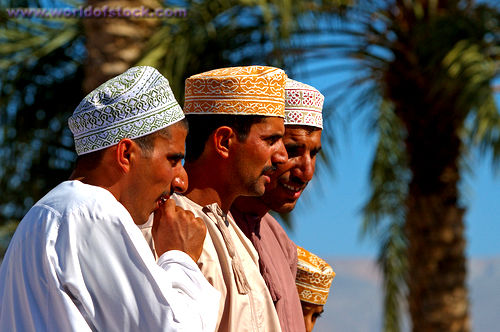
Once the embroidery was completed, the two pieces of the skullcaps would be sent to other women, who would sew the kahfi and the msharadha together, cutting the surplus cloth from the crown, finishing the edges and passing the matanvula thread to stiffen to cap. The finished product was the property of the women who had made the embroidery They had bought the “raw” caps and also paid for the finishing of the makofya. Usually the caps would be sold locally or in Mogadishu, where the Brawanese ladies knew some shopkeepers. Traditionally, every year, one of the most beautiful caps would be given as a gift to fathers and husbands on the occasion of the Eiid al Fitr.
Khadija Mohamed Yarow (Handmade Sewing Barawa Hat)
Special Thanks to Allesandra Vianello
